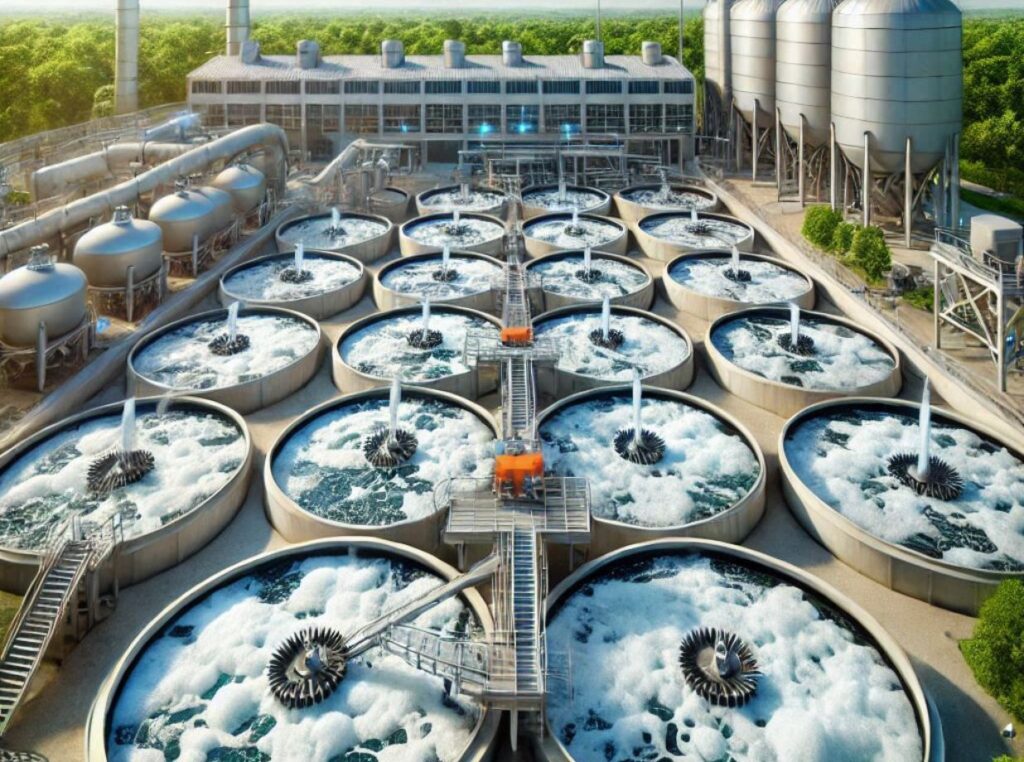What is BOD?
Biological Oxygen Demand, or BOD, is a measure of the amount of oxygen that microorganisms will consume while decomposing organic matter in water. It is an important parameter in assessing water quality because high BOD indicates high levels of organic pollution, which can harm aquatic life. Elevated BOD levels can lead to decreased oxygen availability for aquatic organisms, potentially causing significant disruptions to ecosystems. Monitoring BOD levels is vital for environmental protection and for ensuring that water remains safe for human use and wildlife.
Understanding BOD is essential not only for regulatory compliance but also for maintaining the operational efficiency of wastewater treatment facilities. By keeping track of BOD levels, operators can adjust treatment processes to address any increases in organic matter. This proactive approach helps in avoiding potential environmental issues and ensures that facilities operate within legal limits. Moreover, understanding BOD dynamics helps in designing more efficient treatment systems that can adapt to varying loadings.
Why Do BOD Levels Vary Seasonally?
BOD levels can vary due to several factors, including temperature changes, precipitation patterns, and seasonal industrial activities. For instance, higher temperatures in the summer can increase microbial activity, leading to higher BOD levels. Similarly, increased rainfall can cause runoff that carries organic matter into water bodies, affecting BOD levels. Seasonal agricultural activities, such as planting and harvesting, can also contribute to fluctuations in BOD loadings due to increased organic waste.
Additionally, holiday seasons and tourism can lead to temporary spikes in BOD levels as more waste is generated. Understanding these seasonal trends allows treatment facilities to prepare in advance for potential increases in BOD loadings. By anticipating these changes, operators can implement measures to mitigate their impact, ensuring that treatment systems remain effective and compliant with regulatory standards.
Challenges of Seasonal Variations in BOD Loadings
Impact on Treatment Processes
Seasonal variations in BOD can strain wastewater treatment processes. When BOD loadings increase, the treatment plant may need to work harder to maintain effluent quality. This can lead to higher operational costs and increased wear and tear on equipment. Over time, this strain can result in the need for more frequent maintenance and potential equipment failures, which can disrupt treatment operations.
Moreover, the increased demand on treatment systems may necessitate the use of additional resources, such as chemicals and energy, further elevating operational costs. Facilities must carefully manage these resources to balance the need for effective treatment with budgetary constraints. Implementing adaptive strategies can help mitigate these challenges by optimizing resource use and extending the lifespan of equipment.
Compliance with Regulations
Regulatory agencies set limits on the allowable BOD levels in treated wastewater. Failing to comply with these limits can result in fines and other penalties. Therefore, it’s essential to manage BOD loadings effectively to ensure compliance. Non-compliance not only incurs financial penalties but can also damage a facility’s reputation and lead to stricter oversight from regulatory bodies.
Achieving compliance requires a combination of effective monitoring, timely adjustments to treatment processes, and investment in advanced technologies. Facilities must stay informed about changes in regulations and emerging best practices to remain compliant. Regular audits and assessments can help identify areas for improvement, ensuring that the facility operates within legal parameters and maintains a good standing with regulatory agencies.
Strategies for Managing Seasonal BOD Variations
Adjusting Treatment Processes
One of the most effective ways to handle seasonal BOD variations is to adjust treatment processes. This may involve optimizing aeration systems to increase oxygen supply when BOD levels are high. Additionally, operators can adjust sludge recirculation rates to maintain appropriate microbial populations. By fine-tuning these processes, facilities can enhance the efficiency of biological treatment stages and reduce the risk of non-compliance.
Seasonal adjustments may also include modifying chemical dosing or altering the operation of secondary treatment systems to better manage fluctuating loads. These changes can help improve the resilience of treatment systems, allowing them to cope more effectively with variations in BOD. Continuous evaluation and optimization of treatment processes are essential for maintaining performance and adapting to seasonal changes.

Implementing Advanced Treatment Technologies
Advanced treatment technologies, such as membrane bioreactors (MBRs) or moving bed biofilm reactors (MBBRs), can provide more consistent treatment performance during periods of high BOD loadings. These systems offer greater flexibility and efficiency compared to traditional treatment methods. By incorporating these technologies, facilities can achieve higher removal rates of organic matter and better handle peak loadings.
These advanced systems also offer improved adaptability to changing conditions, allowing operators to respond more swiftly to variations in BOD levels. The increased efficiency and effectiveness of these technologies can lead to reduced operational costs and enhanced regulatory compliance. Investing in cutting-edge treatment solutions is a strategic move for facilities looking to future-proof their operations against seasonal variations.
Seasonal Flow Equalization
Flow equalization is a technique that involves storing incoming wastewater during periods of high flow and releasing it during low-flow periods. This helps to balance the load on the treatment plant, making it easier to handle fluctuations in BOD levels. By smoothing out these variations, facilities can optimize the performance of treatment processes and reduce the likelihood of overloading systems.
Implementing flow equalization systems can also improve the overall efficiency of treatment operations by reducing the need for rapid adjustments to processes during peak periods. This approach allows for more consistent treatment outcomes and can help facilities maintain compliance with regulatory standards. Planning for flow equalization requires careful consideration of storage capacity and infrastructure, but the benefits can be significant in terms of operational stability.
Monitoring and Data Analysis
Continuous Monitoring
Implementing continuous monitoring systems for BOD and other key parameters can provide real-time data on treatment performance. This allows operators to respond quickly to changes in BOD loadings and make necessary adjustments to treatment processes. Continuous monitoring also enhances the ability to detect anomalies or unexpected changes, enabling proactive management of treatment operations.
The data collected through continuous monitoring can be invaluable for understanding the dynamics of BOD variations and identifying trends. By leveraging this information, facilities can optimize their treatment strategies and improve decision-making. Investing in robust monitoring systems is crucial for ensuring that treatment processes remain effective and responsive to changes in BOD loadings.
Data Analysis and Predictive Modeling
Analyzing historical data on BOD levels and other factors can help predict future variations. Predictive modeling tools can assist in planning for seasonal changes and optimizing treatment strategies accordingly. By using these tools, facilities can anticipate potential challenges and develop strategies to mitigate their impact.
Predictive modeling can also aid in resource planning, allowing operators to allocate resources more effectively and reduce waste. The insights gained from data analysis can lead to more informed decisions about process adjustments and investments in new technologies. Embracing data-driven approaches is essential for enhancing the resilience and adaptability of wastewater treatment operations.
Case Studies: Successful Management of Seasonal BOD Variations
Case Study 1: Municipal Wastewater Treatment Plant
A municipal wastewater treatment plant in a region with significant seasonal rainfall variations successfully managed BOD fluctuations by installing an advanced aeration system. This system automatically adjusted oxygen levels based on real-time BOD measurements, resulting in improved treatment performance and compliance with regulatory standards. The plant also invested in staff training to ensure that operators were equipped to manage the new system effectively.
This case study highlights the importance of integrating technology with skilled personnel to achieve optimal treatment outcomes. By empowering staff with the knowledge and tools to adapt to changes, the plant was able to maintain high standards of treatment and regulatory compliance. The success of this approach underscores the value of innovation and collaboration in addressing seasonal variations in BOD loadings.
Case Study 2: Industrial Wastewater Facility
An industrial facility that experienced seasonal peaks in production implemented a flow equalization strategy to manage BOD loadings. By storing wastewater during peak production periods, the facility was able to maintain consistent treatment performance and avoid overloading the system. This approach not only improved operational stability but also reduced the risk of regulatory non-compliance.
The facility also utilized predictive modeling to better understand the impact of production schedules on BOD levels. This allowed for more effective planning and resource allocation, further enhancing the facility’s ability to manage seasonal variations. The case study demonstrates the effectiveness of combining strategic planning with innovative solutions to address the challenges posed by fluctuating BOD loadings.
Importance of Staff Training and Awareness
Training staff on the importance of managing BOD loadings and the strategies available for handling seasonal variations is crucial. Well-informed staff can make better decisions and respond effectively to changes in treatment requirements. Investing in staff training ensures that operators are equipped with the latest knowledge and skills to manage treatment processes efficiently.
Regular Training Sessions
Regular training sessions should be conducted to keep staff updated on the latest treatment technologies and best practices for managing BOD variations. These sessions can also provide an opportunity for staff to share their experiences and insights, fostering a collaborative and informed workplace culture. Ongoing education helps operators stay ahead of industry trends and regulatory changes, ensuring that facilities remain compliant and efficient.
Training programs should be tailored to the specific needs of the facility and its staff, taking into account the unique challenges posed by seasonal variations. By prioritizing staff development, facilities can enhance their operational resilience and adaptability. Well-trained staff are better equipped to manage the complexities of wastewater treatment and contribute to the overall success of the facility.
Encouraging Proactive Management
Encouraging a proactive approach to wastewater management can help identify potential issues before they become significant problems. This includes regular equipment maintenance, monitoring, and data analysis. Proactive management fosters a culture of continuous improvement, where staff are encouraged to seek out new solutions and optimize existing processes.
By promoting a proactive mindset, facilities can enhance their ability to respond to changes in BOD loadings and maintain treatment efficiency. This approach also supports long-term sustainability by reducing the likelihood of costly repairs and regulatory penalties. Facilities that prioritize proactive management are better positioned to adapt to the challenges posed by seasonal variations and ensure reliable performance throughout the year.
Conclusion
Seasonal variations in BOD loadings present significant challenges to wastewater treatment facilities. However, by understanding the causes of these variations and implementing effective strategies, operators can maintain treatment efficiency and compliance with regulations. Adjusting treatment processes, utilizing advanced technologies, and investing in staff training are all critical components of a successful management plan. By adopting these practices, facilities can ensure reliable performance throughout the year.
Adapting to seasonal changes requires a commitment to innovation and continuous improvement. Facilities that embrace new technologies and data-driven approaches are better equipped to handle the complexities of wastewater management. By fostering a culture of learning and adaptability, treatment plants can achieve long-term success and contribute to environmental protection. Through strategic planning and investment, facilities can navigate the challenges of seasonal BOD variations and ensure sustainable operations.
